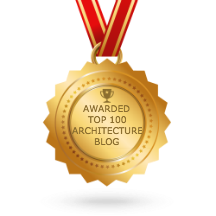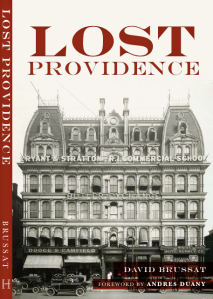Here is the column from 1997 about Paul Goldberger’s lecture in Newport that I refer to in my blog “Botching history in Newport.” The illustration above, which went viral online, is from an recent exhibit at the Newport Historical Society. I tried but was unable to find the illustration of the Great Friends Meeting House that Goldberger praised in his remarks quoted below. Maybe a reader has it and can send a copy to me.
Preserving Newport’s authenticity
July 3, 1997
THE NEWPORT HISTORICAL SOCIETY is planning to build a new headquarters on the grounds of the Great Friends Meeting House, built in 1699. By the end of May, the society had narrowed the field to four architects, including two famous postmodernists, Robert Venturi and Robert A.M. Stern. Then it invited New York Times architecture critic Paul Goldberger to give a speech on contemporary architecture and historic preservation.
On my way to hear the speech, to be delivered at the meeting house, the conspiracy theorist within me imagined that a “signature” building was what the Newport Historical Society secretly had in mind, and that the great critic was being brought in to help its board of directors feel more comfortable with the idea of a modern rather than a traditional building.
Well, I listened to the speech, took notes, and waited for Goldberger to say something I could blast in this space. I expected him to say that if the design makes certain stylistic bows in deference to the old meeting house, the respect due to history will have been paid; the new building could then be designed to make a bold statement rather than merely fitting into the (yawn!) traditional fabric of its historic context.
But Goldberger said nothing of the sort. Instead, he offered an elegant analysis of the quandary facing the City by the Sea. With its economy increasingly dependent on tourism, how can it change, as living cities must, without sacrificing its history? “Newport’s danger is not destruction,” he said, “but caricature. The economy will not destroy this city by tearing it down. The real risk is that it will destroy this city by forcing it to become a caricature of itself.”
He warned that Santa Fe “mandated the so-called ‘Santa Fe Style’ ” by law, and has become “an adobe theme park.” He noted the “risk of a city thinking itself so special that it tries to bottle itself.” “How does Newport protect itself from this? It is not easy, especially when your very selling point . . . is that you are thought . . . to resemble a theme park already.”
For Goldberger, the answer is “authenticity.” To illustrate, he returned to “America’s first trophy city,” to the building in which we sat. “I was struck by the wonderful invitation to tonight’s event, the lovely and gentle cartoon illustration of the Great Friends Meeting House, drawn in such a way as to deftly show us . . . the way in which this building had changed over time, the way in which the citizens of Newport had not believed it to be frozen in time but to be something that evolved and changed to reflect the evolution and change of a living city.”
He noted, however, that “far too much preservation goes on not because we value what is being preserved but because we fear what will replace it.” He called this “the dark underside of preservation,” and urged us to “remember, again, that the remakers of the Great Friends Meeting House had no such fears in 1729 and 1807. And if we are ever going to produce a valid and authentic architecture in our own time, we have to overcome that fear ourselves.”
We have nothing to fear, I would say, but modern architecture itself. If Newport seems “cute,” it is because modernism has made a freak of beauty. Modern architecture is precisely what is inauthentic.
I doubt Goldberger would say that. But in urging Newport to avoid a “superficial re-use of historical form,” he said: “I am not arguing the old modernist argument about the spirit of the age, and saying that any architecture that resembles anything traditional, anything old, is automatically invalid, and that everything has to be modern to be real. Not at all. That was something of a fallacy, . . . and not only because people love what has come before, cherish it, and seek it in what they build now. . . . But the spirit-of-the-age argument is untrue also because it is not the way architecture has ever worked. Everything has always built on what has come before, taken from it and reinterpreted it, revised it, built upon it.”
Always – until modern architecture. Instead of building upon the past, modernism rejects as “invalid” what came before. Modernists sneer at the public for loving “what has come before.” The public hates modernism for sneering at what the public loves.
Yet, modernism is again in vogue among young architects because, according to Goldberger, the revival of traditional architecture has become “glib and simple and facile.” Maybe, but if so, how much of it is the result of faint-heartedness among traditional architects caused by the continued sneering of so many critics, professors and design review panelists?
The quest for authenticity is, in fact, a quest for the courage to confront the sneer, to embrace architecture unsullied by the doubts of our own dubious century [the one we are out of now, but no doubt this one, too]. To find authenticity, architecture must seek its roots. I hope Paul Goldberger agrees. But I pray the Newport Historical Society agrees, and that Venturi, Stern et al. will bravely confront the sneer!
* * *
CAPTION: Great Friends Meeting House (1699). Inset: Sketch, on Newport Historical Society invitation, of 1729 and 1807 additions (NHS).
Copyright © 1997. LMG Rhode Island Holdings, Inc. All Rights Reserved.
Record Number: MERLIN_589503




Pingback: Botching history in Newport | Architecture Here and There